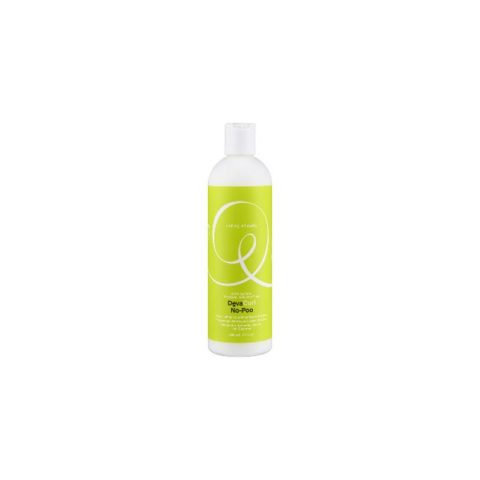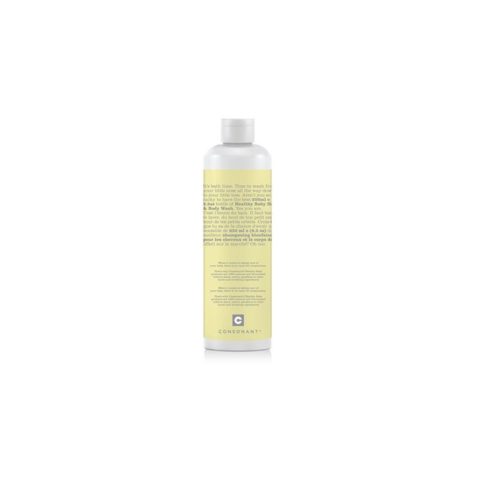Beginner’s guide to sulfates: Should you give up your favourite shampoo?
I can easily recall the old Herbal Essences commercials: the loud and lusty bombshell completely overwhelmed with her hair-washing experience. I always figured it was the lathering, foamy wash that was so exciting.
For the last four years, I’ve been pretty clean and green with my beauty routine. Finding products that contained ingredients I was comfortable with was fairly easy, and I didn’t feel that I was making any sacrifices. Most of the new green products were going mainstream anyway. The one thing I couldn’t get a grasp on was hair care. I tried the no ‘poo thing, cleansing with baking soda and apple cider vinegar, using oil-based shampoo bars, and natural products that didn’t lather. My long thin hair looked ok—it was healthy, that’s for sure—but I couldn’t shake the feeling that I needed to just wash it, to really give it a good scrub. Eventually, I succumbed to the foam and went back to sudsing up.
It isn’t so simple to wash-and-go anymore. With ingredient-aware shoppers leaving no product unturned, many companies have re-formulated their shampoos and cleansers to be sulfate-free in response to consumer demand. But what exactly are sulfates and should we be avoiding them completely?
Sulfates are an ester of sulphuric acid that’s often found at the top of the ingredient list as Sodium laureth sulfate and Sodium lauryl sulfate (SLS), though it can show up in other forms as well. Sulfates are responsible for suds and lathering. As a surfactant, they lower the surface tension of water to spread out and be penetrated easily—hence the lathering and sudsing up of soap.
The Environmental Working Group’s Skin Deep cosmetic database (a non-profit environmental organization) lists sulphites as a low-to-moderate risk, but notes potential for irritation and limited data. The main concern with sulfates among consumers is that they ‘strip’ hair of natural oils, leading to dryness and frizz.
The potential to be drying and/or irritating is what leads most people to find a shampoo that is sulfate-free. Holistic skin care specialist Colette Yeomans of Clarite Wellness in Vancouver is on the side of playing it safe. “Sulfates are the foaming agents that give our shampoo and cleansers that sudsy lather and squeaky-clean feeling. Not only is this ingredient potentially harmful for us it also strips the skin and hair of much-needed moisture.” If you find your skin particularly dry after showering, think of when you suds up and rinse away shampoo, the ingredients are being rinsed away over the skin of the body.
Natural cult-fave haircare line Rahua Amazon Beauty doesn’t contain sulfates. Founder Anna Ayers believes that “sulfates are harsh and weaken strands and they are not natural.” She also mentions that “sulfates irritate the skin, contaminate the environment and deposit residues in the human body.” Instead the line uses coco betaines, a cleansing agent derived from coconut oil.
Many curly-haired women, or people with coarse or dry hair avoid sulfates, to keep hair soft as well as people who colour-treat their hair, feeling that sulfates strip the colour more quickly than a shampoo without. But, it depends on what you’re comfortable with, and what your needs are. Switching and rotating shampoos is a well-known hair care practice, so that hair doesn’t get ‘bored’ with the same cleaning process over and over. Trying or adding a sulfate-free shampoo to your hair care is a good idea if you’re noticing dryness, split ends or a lack-lustre appearance. Look for shampoo under green and natural lines, or products marked ‘sulfate-free’.
If you feel like your hair is really craving a good lather, using a shampoo with sulfates about once a month, or using a clarifying shampoo, will help with getting rid of buildup and residue.
Browse the gallery below for our favourite sulfate-free shampoos.
The post Beginner’s guide to sulfates: Should you give up your favourite shampoo? appeared first on FASHION Magazine.






